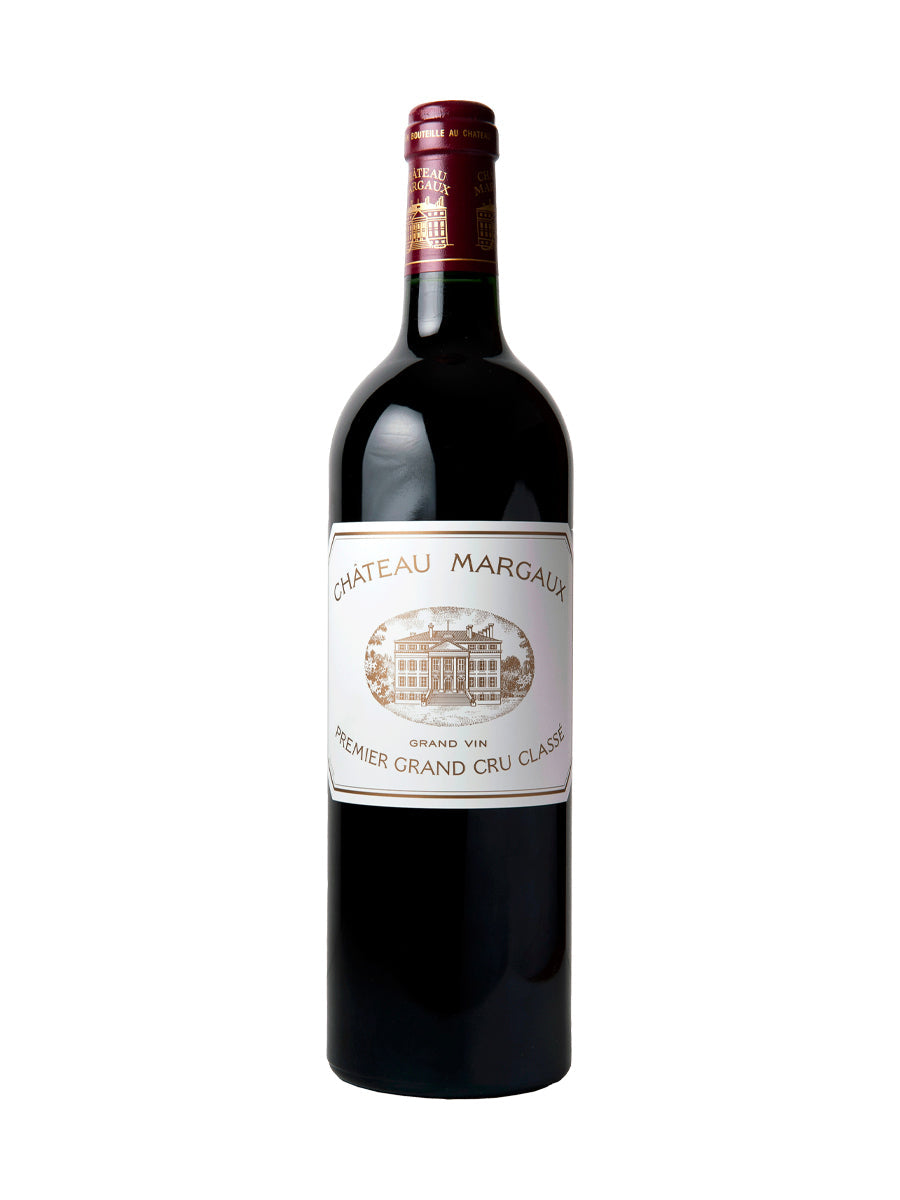

CHATEAU MARGAUX, 2024


En primeurs 2024
Vision of the 2024 Vintage
« The crafting of Château Margaux 2024 required unwavering attention. This particularly technical vintage demanded heightened precision all the way to the harvest, where every decision was crucial to preserve the balance and aromatic purity that define our Grand Vin. » - Château Margaux
Viticulture
The 2024 vintage at Château Margaux was marked by a rainy and mild winter, with rainfall reaching extraordinary levels. 1,000 mm of precipitation fell between October 18 and March 28—a record surpassing by 300 mm the previous benchmark for a rainy vintage. Budbreak occurred early, 7 to 10 days ahead of recent averages, while flowering was slightly delayed. Veraison was similar to the rainy vintages of 2014 and 2016.
The mosaic of terroirs at the Château led to varied responses. On deep, cool soils, the vines experienced more pronounced humidity, particularly in plots designated for the third wine of Château Margaux. Conversely, the more draining and early-ripening Graves soils proved highly valuable for preserving the potential of the 2024 vintage.
Harvest
The harvest was shaped by regular rainfall, prompting Château Margaux to proceed in two phases. A first harvest took place from September 23 to 29, followed by a second from September 30 to October 8. This decision was made to protect the quality of the 2024 vintage and allow the grapes to reach optimal maturity by carefully monitoring each plot.
Sorting was rigorous, and the average yield reached 30 hl/ha. This figure is especially notable considering that 46% of the harvest was dedicated to the production of the Grand Vin. The finest Cabernet Sauvignon plots were less affected by mildew.
Château Margaux 2024 Tasting
« Château Margaux 2024 exemplifies the finesse and depth of our Grand Vin. With a blend dominated by 93% Cabernet Sauvignon, it offers an elegant structure, great freshness, and refined aromatic complexity. The meticulous selection of the best grapes allowed us to preserve its exceptional balance despite climatic challenges. » - Château Margaux

Details chateau MARGAUX
Histoire et anecdotes
The history of the Château dates back to the 13th century when it was a fortress known as “Château de la Mothe Margaux”, the word “motte” meant “small hill” which is a rare relief on the Medoc plain. In the 15th century, the vineyard was structured thanks to the Lestonnac family, which anticipated the Medoc agricultural turn, abandoning cereal farming towards vine-growing. In 1855, the vineyard was classified as Premier Grand Cru in the 1855 classification. The estate was sold to André Mentzelopoulos in 1977, he started important modernization works. Nowadays, his daughter Corinne, keeps working on her father’s creation.
Détail du vignoble
| AGRICULTURE | Sustainable |
| GRAPE VARIETIES |
Red varieties: 74% of cabernet sauvignon, 23% of merlot, 3% of cabernet franc White varieties: 100% of sauvignon blanc |
| VINEYARD SURFACE AREA | 94 hectares, 87 hectares for red varieties and 12 hectares for white varieties |
| ANNUAL PRODUCTION | 120,000 bottles |
| HARVEST | Manual |
| SOIL |
Medium and fine gravel on a depth of 4 to 11 metres, clayey-gravelly |
Les prix s'appliquent au format 75cl et pour une quantité d'une bouteille en T.T.C.
Invest in the future of Bordeaux Futures,
and customized service from Maison Wineted
A unique opportunity to buy Bordeaux 2024 en primeur wines
Treat yourself to exclusive access to the great wines of Bordeaux en Primeurs 2024 before bottling. Each cuvée is selected directly from the greatest châteaux in the world. Bordeaux, with guaranteed traceability and optimal preservation.
Why choose Maison Wineted to buy Bordeaux Futures 2024?
- Direct access to Bordeaux's most prestigious Châteaux
- Guarantees of origin and provenance
- Optimum preservation and customized delivery
- Personalized support on request
- Expertise recognized on the Bordeaux marketplace
Tous nos primeurs 2024
CARILLON D'ANGELUS
CARRUADES DE LAFITE
CHAPELLE D'AUSONE
CHATEAU ANGELUS
CHATEAU AUSONE
CHATEAU BEYCHEVELLE
CHATEAU CANON
CHATEAU CHEVAL BLANC
CHATEAU COS D'ESTOURNEL BLANC
CHATEAU COS D'ESTOURNEL
CHATEAU DUHART MILON
CHATEAU FIGEAC
CHATEAU GISCOURS
CHATEAU HAUT BRION BLANC
CHATEAU HAUT BRION
CHATEAU L'EGLISE-CLINET
CHATEAU L'EVANGILE
CHATEAU LA CONSEILLANTE
CHATEAU LA MISSION HAUT BRION BLANC
CHATEAU LA MISSION HAUT BRION
CHATEAU LAFITE ROTHSCHILD
CHATEAU LYNCH-BAGES
CHATEAU LÉOVILLE BARTON
CHATEAU LÉOVILLE LAS CASES
CHATEAU MARGAUX
CHATEAU MOUTON ROTHSCHILD
CHATEAU PALMER
CHATEAU PAPE CLEMENT BLANC
CHATEAU PAPE CLEMENT
CHATEAU PAVIE
CHATEAU PICHON-LONGUEVILLE COMTESSE DE LALANDE
CHATEAU PONTET-CANET
CHATEAU QUINTUS
CHATEAU SMITH HAUT LAFITTE BLANC
CHATEAU SMITH HAUT LAFITTE
CHATEAU VALANDRAUD
CLOS FOURTET
LA CHAPELLE DE LA MISSION HAUT-BRION
LA CLARENCE DE HAUT BRION










